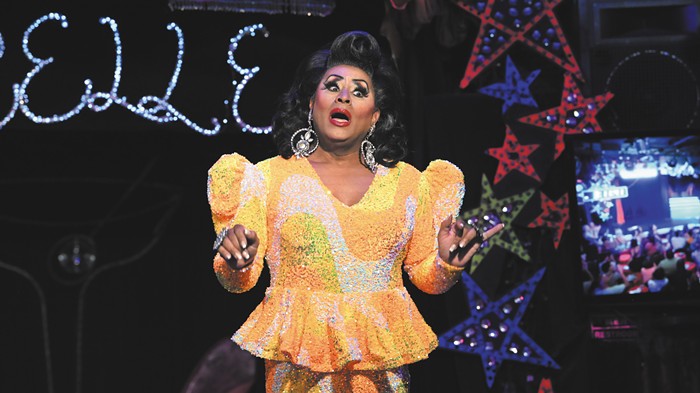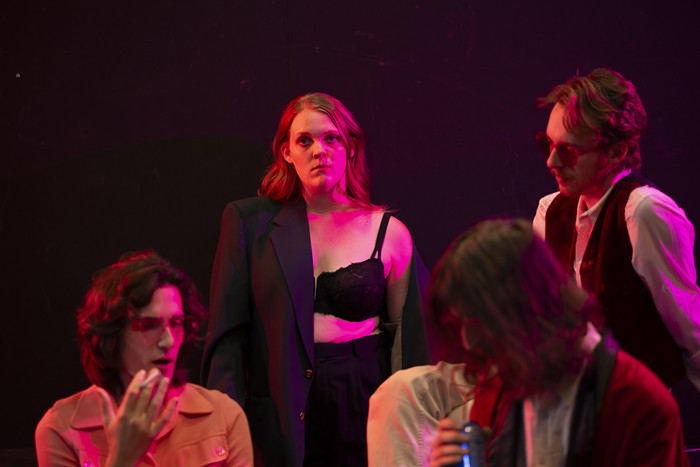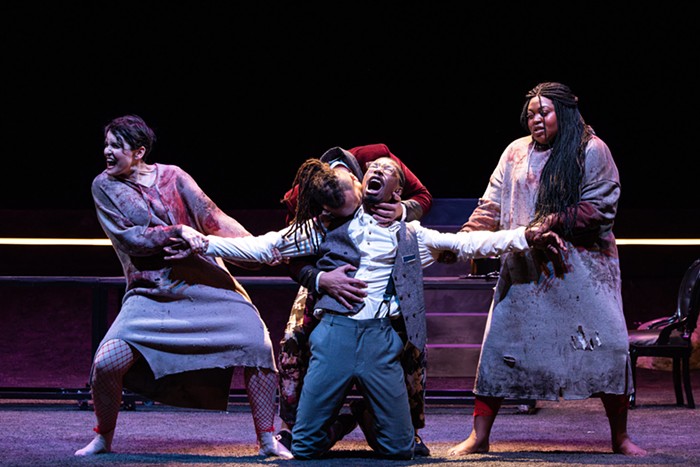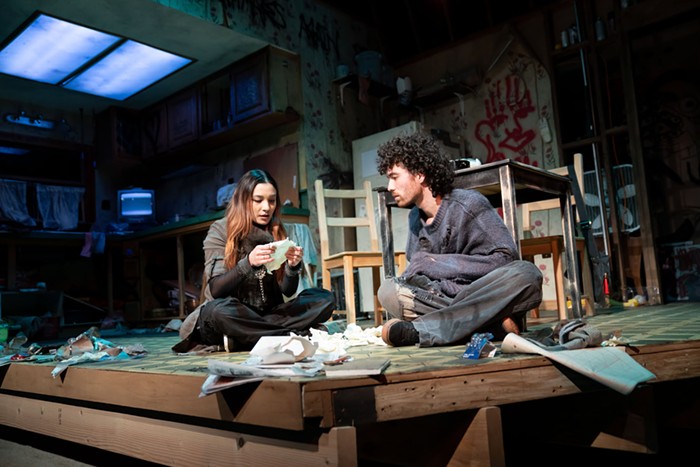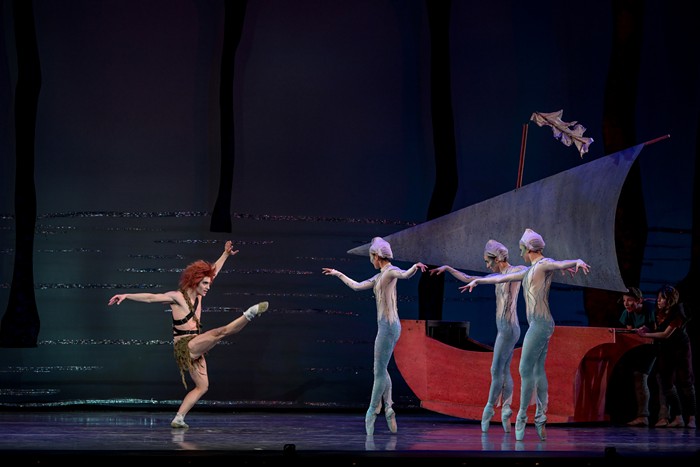Tears of Joy at the Winningstad Theatre
1111 SW Broadway 248-0557, Sat 8 pm, $14
For me, the idea of a puppet show conjures up images of button-eyed sock puppets and Punch and Judy displays of violence. But those are puppets for neophytes. There's a whole wide world of the crazy little things, and of late Portland is getting its share of shows. The most recent is Between Two Worlds, presented by the Tears of Joy Theatre Company. By far the most serious puppet show I have ever witnessed, these puppets exhibit a broader range of human emotion than most people.
Between Two Worlds is an adaptation of The Dybbuk, a classic Jewish love story by S. Ansky. No innocent drama, The Dybbuk tells the story of an unrequited lover who dies and comes back to possess his beloved. It's also a heavy-handed religious tale, cautioning against the usual evils of money-hoarding, disobeying God and breaking betrothal vows.
The best part of Between Two Worlds are the puppets, which look like classic wooden dolls, painted and dressed, each about two and a half feet long. Though their expressions never change, their jointed bodies allow the puppeteers exceptional control over their actions, giving them a life of their own. At times I forgot they were puppets, and I swear I could see their hands open and close. The four puppeteers are equally eerie and intriguing. Dressed in faded red, faces concealed, they operate and voice the puppets in full view of the audience, but in such a stylized, controlled manner that it's a performance of its own. Together they execute exorcisms, murderous flashbacks, deadly wedding dances and bizarre, other-worldly dream sequences (which include an anatomically-correct naked puppet) that take on a cinematic quality with the help of an original score of violin and cello chords.
The show's weakness is, unfortunately, the script, which wrings melodrama from nearly every line. Bits like, "I'd like to throw myself against the synagogue walls to understand its tears!" are easier to stomach coming from a puppet, but really, classic theatre or not, they still seem indulgent. The play's most mesmerizing sequences occur when the puppets aren't speaking, just magically moving. ANNA SIMON
